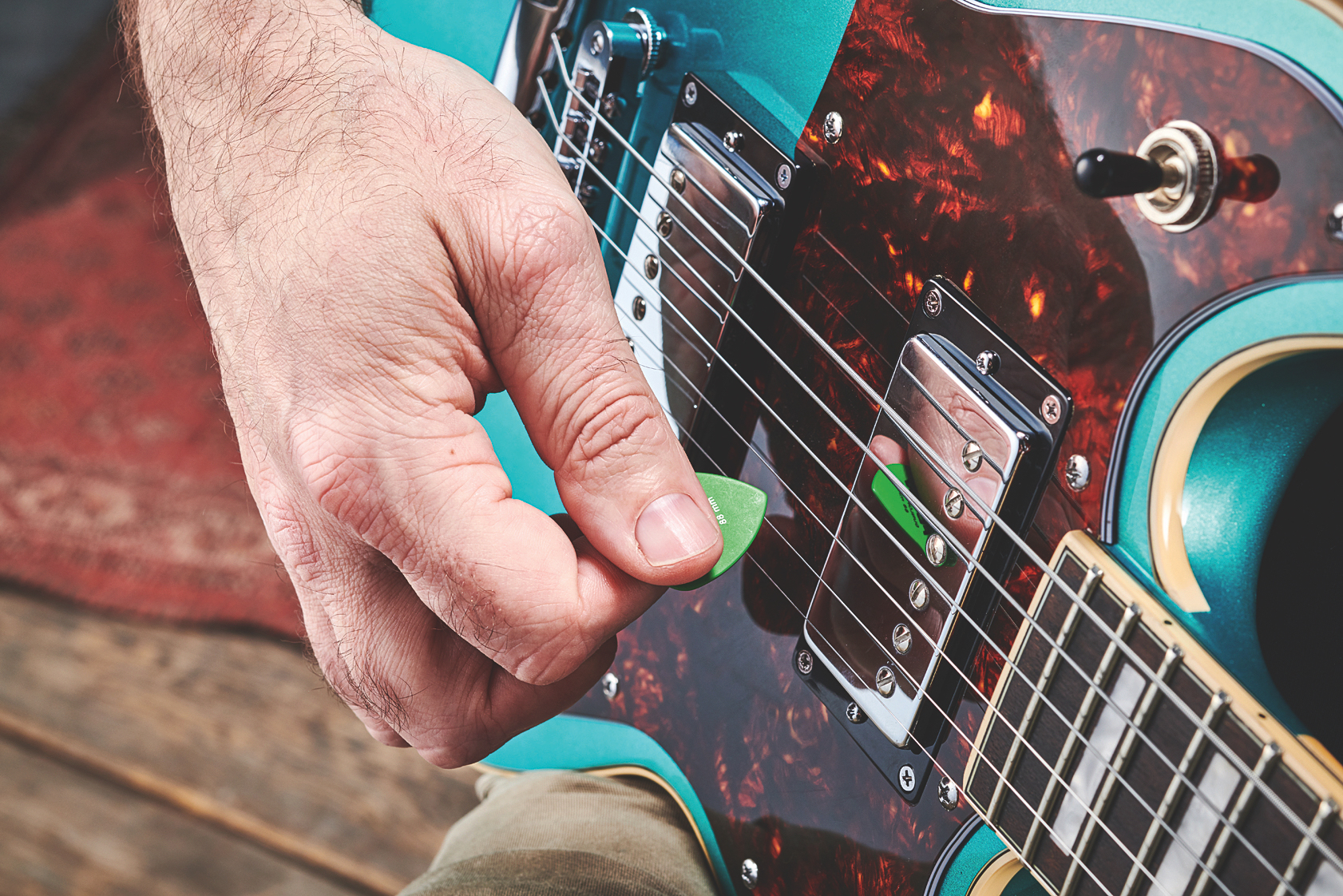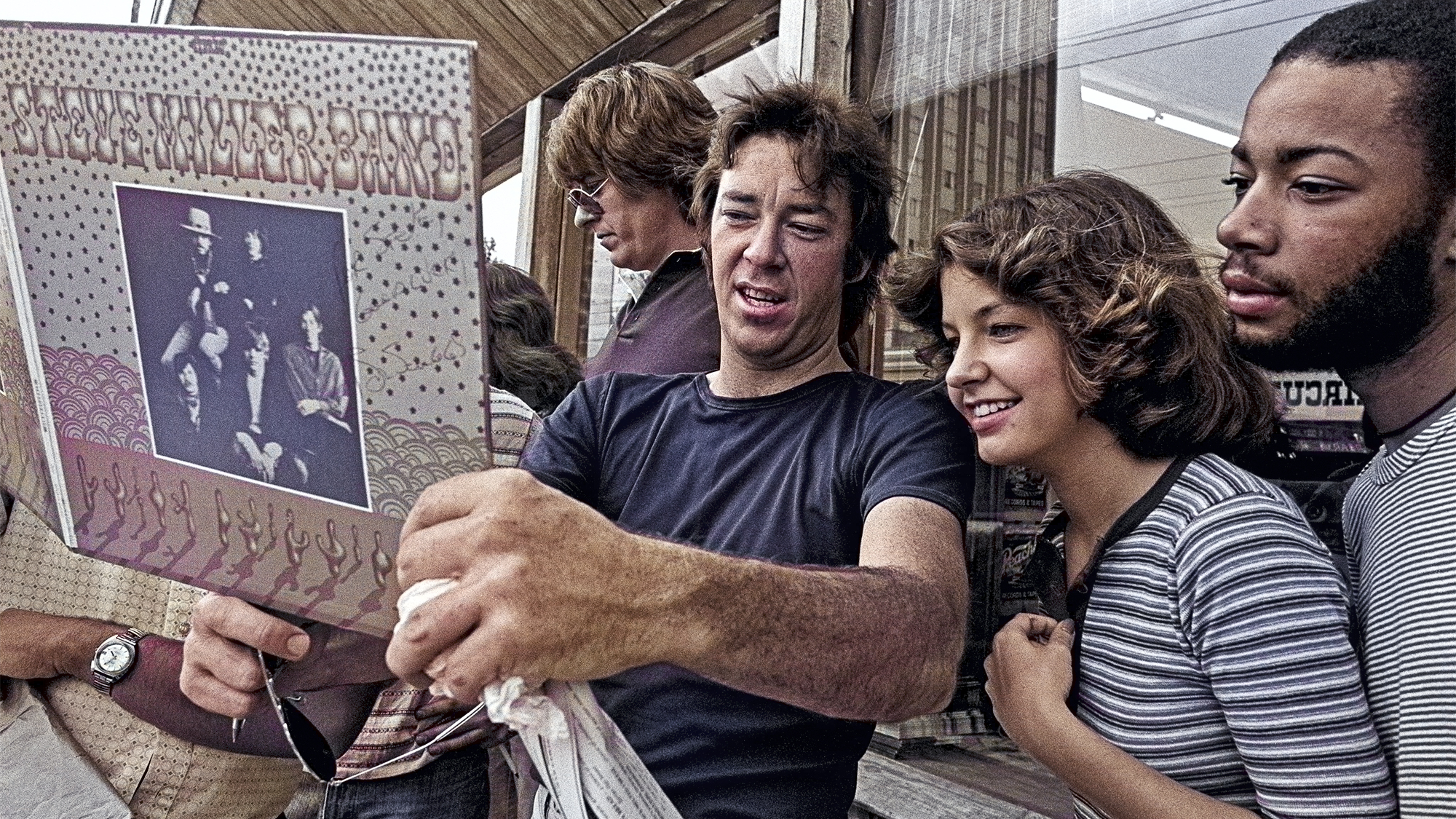Learn to Play Guitar in Almost Any Genre with These Essential Licks
This quick guitar “Licktionary” reference guide will help familiarize you with a wealth of different musical styles.

When you don’t know the spelling or meaning of a word, where do you turn? To the dictionary, of course.
But what if you’re looking for fresh inspiration or want to try soloing in a different style? Where do you turn then?
To the Lick-tionary!
Whether you’re interested in new styles of music or just want to add to your bag of licks, this quick Guitar “Licktionary” reference guide will help familiarize you with a wealth of different musical styles.
In it, you’ll find some classic examples inspired by the great guitarists in each genre. In addition, the concepts behind each lick are explained in detail, so that you can understand them for yourself and get more than just a lick - you’ll get enough knowledge to create something fresh that’s all your own.
As you work your way through the examples, remember that the tone and tempo markings provided are merely suggestions, and that most of the licks can be crossed over to different styles as well as transposed to different keys, mixed and matched, and further embellished.
Alternative Rock
Here’s an angry-sounding lick that typifies the alternative scene of the early Nineties (e.g. Soundgarden, Pearl Jam, Nirvana). Based on the E blues scale (E G A Bb B D), this phrase mixes bluesy double-stops with an unusual triple-stop bend. Play this lick over altered dominant 7th or power chords.
All the latest guitar news, interviews, lessons, reviews, deals and more, direct to your inbox!

Blues
Derived from the A blues scale (A C D Eb E G), this Stevie Ray Vaughan–influenced lick works as well over dominant 7th chords as it does over minor chords. Pick aggressively, and don’t forget to give the final high C note a slight “nudge.”

Blues-Rock
This A minor pentatonic (A C D E G) lick is straight out of the Clapton/Page/Beck school of classic blues-rock guitar. Starting out in the pentatonic box in 5th position, it climbs to the Albert King box at the 8th fret. Notice the use of repetition, which results in a cool rhythmic displacement of the main motif. This lick is best utilized over a power chord progression.

Blues Turnaround
The turnaround occurs in the final two measures of a 12-bar blues. The classic turnaround lick shown here has been around since Robert Johnson and has been used in one form or another by everyone from Muddy Waters to Stevie Ray Vaughan. Play the descending chromatic line with the pick and the high A pedal with your middle finger.

Country Rock
Here’s a D major pentatonic (D E F# A B) lick that’s perfect for the happy strains of country-rock. The 6th intervals fall naturally under the fingers, but the oblique double-stop bend can be a nasty move if you’re not used to it. Concentrate on keeping your pinkie “fixed” on the B string as you bend the G string with your ring finger. Play this lick over major chord types.

Fast Country
This jaw-dropping high-tech country barn-burner is classic Albert Lee. Derived from the C Mixolydian mode (C D E F G A Bb) and overlapped with the blues scale, it also serves as a lesson in legato and alternate-picking techniques. The secret is to keep your hand in alternate-picking motion through the entire phrase. Play this lick over dominant 7th chord types.

Funk
This ultra-funky minor pentatonic lick works well over both dominant 7th and minor 7th chords, the two main chord types found in funk. Just as important as the notes are the muted scratches. Don’t be afraid to dig in and play as many muted strings as possible around the fretted notes. This will add greatly to the funk factor.

Funk-Rock
Here’s a lick for the mother of all funk-rock chords, E7#9. It consists of an octave figure and a series of double-stops derived from the E minor pentatonic scale (E G A B D). This phrase is fashioned from the styles of John Frusciante and Stevie Ray Vaughan. Make sure you mute the “in-between” string with the fleshy part of your fret-hand index finger when executing the octaves.

Fusion
Triad superimposition is the catalyst that creates the “outside” quality of this lick. Using the C minor pentatonic scale as a foundation, Gb and Gb+ triads are superimposed to provide “tension” to the C minor harmony. This is a popular technique in fusion, and you’ll hear players from John McLaughlin to John Scofield employing it over minor 7th chords.

Hard Rock
Here’s a speedy E Aeolian lick that borrows from George Lynch and Randy Rhoads, sequenced just right for an E minor chord or an E minor chord progression. Stay in 7th position, and use alternate picking until you reach measure 2. Try sweep picking the opening Em arpeggios, and then return to alternate picking for the remainder of the lick.

Jazz Bebop
This swinging phrase uses chromaticism (a common soloing device in bebop) to approach the “target” notes of the dominant 7th chord (Bb7) - 3rd (D), 5th (F) and b7th (Ab). Notice how the slides help your fretting hand smoothly shift back and forth between 5th and 6th positions.

Jazz Turnaround
Here’s a lick to guide you through a I-VI-ii-V jazz turnaround (the final two measures of a 12-bar form) in F. Beginning with chromatic lines that outline an F7#9 tonality of the I chord, it moves to a D7b9 arpeggio on the VI chord. The G blues scale is used over the ii chord, and the C altered scale (7th mode of Db melodic minor) supplies the tension for the V chord.

Jazz ii-V-i
This ii-V-i lick puts two popular jazz scales to good use. For the ii chord, D Locrian #2 (6th mode of F melodic minor) outlines the chord tones to perfection, and the G altered scale (7th mode of Ab melodic minor) is used on the V, as it contains all four alteration possibilities (b5, #5, b9, #9).

Latin Rock
Here’s a lick in the style of the undisputed king of Latin-rock guitar, Carlos Santana. It exploits the G Dorian mode (G A Bb C D E F) and throws in a few choice bends and slides as well as hammer-ons and pull-offs. Notice that it’s played over a Gm-C (i-IV) progression, the most common progression in Latin rock music.

Metal
This classic metal lick sequences the F# Phrygian mode (F# G A B C# D E) and a bit of the F# minor pentatonic scale (F# A B C# E) over the crushing F#5–G5 (I-bII) progression popularized by bands like Black Sabbath, Metallica and Pantera.

Neoclassical Rock
Here’s an arpeggio scale lick played over a V7-i progression that calls to mind Yngwie Malmsteen and the neoclassical rock of the Eighties. Two economy-picked arpeggios (E7b9 and F) begin the phrase, followed by a sequenced A harmonic minor scale using alternate picking. Returning to economy picking, the lick ends with a two-octave Am (add 9) arpeggio.

R&B
This one is right out of the Curtis Mayfield/Jimi Hendrix school of rhythm-and-blues soloing and can be used for either an E major or C# minor (relative minor) chord type. The notes are all from the E major scale and played in mostly double-stop form in 9th position.

Rock And Roll
Here’s a Chuck Berry–meets–Brian Setzer lick that can be played in a straight-eighth feel as well as a rockabilly swing. The major/minor tonality is the result of a constant mixing of A major and A minor pentatonic note choices. This type of lick can be played over major, major 6th or dominant 7th chord types.

Rock Ballad
Melody and phrasing are the key ingredients of this smooth lick in the style of Journey’s Neal Schon, Boston’s Tom Scholz and Toto’s Steve Lukather. Following a hammer-on run up the A major pentatonic scale, the entire major scale is bent, slid, hammered on or pulled off over the chord tones of the I-IV progression.

Rock Cadenza
Here’s a cadenza in the style of the king of rock endings himself, Eddie Van Halen. Hovering around 12th position and featuring plenty of legato, it stays exclusively within the E blues scale until shifting to E Dorian on beat 4 and finally coming to rest on a minor-to-major 3rd slow bend. Use this lick over a power chord or an altered dominant 7th chord type.

Shred
Here’s an E minor shred lick that’s much easier than it looks (or sounds)! Its phrasing is entirely legato, with the right hand tapping each string at the 12th fret (E minor pentatonic notes) while the left “pulls off” a descending three-notes-per-string pattern.

Slow Blues
This dominant 7th (G7) lick is perfect for a slow blues in the style of B.B. King. Firmly rooted in 8th position, it begins with a short G major pentatonic line in the pick-up measure, moves to the G blues scale (with an added 9th) in the first bar, and then mixes G major and minor pentatonic phrases in the second. Notice how many pitches are “milked” from the 10th fret of the B string.

Southern Rock
The D major pentatonic (add4) scale gets a workout with this wiggly lick in the southern rock style of the Allman Brothers’ Dickey Betts and Lynyrd Skynyrd’s Ed King. Use this type of lick over major chords.

Surf Rock
Crank up the reverb and tremolo for this C minor pentatonic double-stop fest. Use an aggressive downstroke attack, and pour on the attitude. You can use this type of lick over minor, major or dominant 7th chords.

Launched in 1967, Guitar Player was the world's first guitar magazine and is now one of the premier sources of guitar news, interviews, reviews and lessons. When a story is credited to 'GP Editors', it means it's coming from the magazine team itself and that more than one of us has worked on the story.

